Backflow Preventer vs Check Valve-We’ll go through the fundamental differences between backflow preventers and check valves in this post. Also, while check valves have other essential purposes, they cannot be regarded as a safe substitute for backflow preventers when it comes to maintaining the purity of drinking water, as is frequently asked on the internet forums.
How We write this Blog Post about Backflow Preventer vs Check Valve
We understand that it can be confusing to differentiate between backflow preventers and check valves, but it is important to know the difference between them. Backflow preventers are devices that prevent water from flowing back into the main water supply, while check valves are devices that allow water to flow only in one direction. Backflow preventers are used in situations where there is a risk of contamination of the main water supply, such as in irrigation systems or fire sprinkler systems. Check valves are used in situations where it is important to prevent backflow, such as in sump pumps or sewage ejector pumps.
When writing this blog post about backflow preventers vs. check valves, we analyzed various sources and webpages to ensure that we had a comprehensive understanding of the topic. We also consulted with our experts and drew on our previous experiences to provide you with accurate and helpful information. Our goal was to provide you with a clear understanding of the differences between backflow preventers and check valves so that you can make an informed decision about which device is right for your needs.
Backflow Preventer vs Check Valve: Clear Comparison
Backflow preventers and check valves are vital plumbing safety devices that work on the same principles but serve slightly different objectives.
Backflow Preventers and Check Valves differ primarily in their application. A backflow preventer is used in high-risk scenarios and is designed to fully protect potable water with its fail-safe design, whereas a check valve is used in low-risk situations and stops backward water flow but lacks the same fail-safe components.
Let’s start with why backflow occurs in the first place. Backpressure or back siphoning are the two possible causes. Backpressure occurs when the downstream piping has a higher pressure than the supply piping. Pumps, heat expansion or elevated head pressure can all contribute to this. Back siphoning occurs when the supply piping is under negative pressure. A water main break or higher-than-normal draw rates, such as a fire hydrant discharge, can cause downstream pipe flow to reverse direction and return to the source pipe.
It’s critical to have suitable protective systems in place since downstream water treated with chemicals, such as in an HVAC chilled water loop or a chemical sprayer attached to a garden hose, can contaminate the public water supply in either situation. If backflow occurs, contaminants including chemicals, germs, and sediments, can be drawn into the city’s household water supply pipe and then redistributed to someone for drinking, cooking, or other potentially hazardous purposes.
Backflow Preventer vs Check Valve: Why They Aren’t Interchangeable Devices
Backflow occurs when the flow of liquids, gases, or semisolids in pipes reverses in the wrong direction due to pressure changes in the pipes. Check valves are meant to ensure that chemicals in a pipe only flow in one direction, closing immediately if the direction is reversed to prevent unwanted backflow. They’ve been utilized successfully in a wide range of applications, including backflow protection for pumps and filters, preventing drainage in a fire sprinkler system with elevation changes, pressure relief in liquid or pneumatic applications, and more.
Check valves, due to their basic design, typically operate without the need for automation or human interaction, continuing to function even if the power goes out or humans are unable to manually cycle them. Instead, check valves are flow-sensitive; when water flows through a pipe, check valves open or close based on the velocity of the water. The cracking pressure, or minimum upstream pressure necessary to operate a check valve, is usually between 1 and 5 pounds per square inch (PSI).
A spring-loaded hinged clapper on many check valves keeps the valve closed until water from a source opens it. The spring presses the clapper against a rubber seat if the pressure downstream exceeds the pressure upstream, establishing a watertight seal and preventing flow reversal.
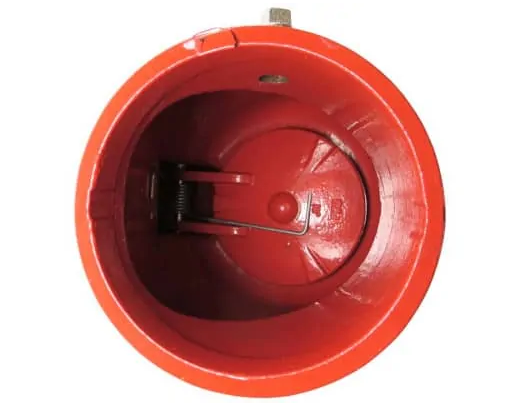
But here’s the thing: in low-risk situations, such as where equipment damage is the primary concern, a check valve can be a valuable backflow prevention tool. Local plumbing standards, on the other hand, necessitate the more reliable protection of backflow preventers when the stakes are as high as the cleanliness of the water people drink.
While check valves are generally reliable, they can fail for a variety of causes. Because the clapper of a check valve is constantly in the flow path, it will move even if there isn’t enough flow. Wear is caused by parts rubbing against each other, which can lead to checking valve failure. Damaged components can potentially escape into the line in extreme circumstances, causing other valves or equipment to fail.
Check valve failures are frequently caused by worn seat seals, as well as lodged debris that causes the valve to remain stuck in the open or close position. Water hammer occurs when a flow reversal downstream causes the valve to close abruptly, causing a pressure wave to travel throughout the pipe and inflict damage. Failures can also be caused by poor maintenance, installation, or assembly.
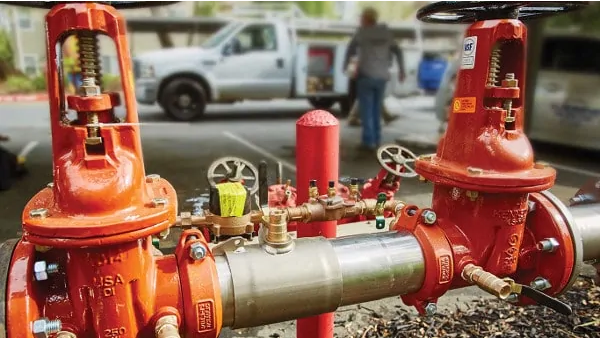
When Is a Backflow Preventer Required?
Backflow preventers are typically used where a city’s water supply links to a private building’s domestic water plumbing or where potable water meets non-potable water, such as:
- Mechanical (HVAC) Pipe systems – This comprises cold water as well as hot water heated by a boiler.
- Fire suppression systems
- Irrigation Systems
- Darkroom sinks
- Manufacturing systems
Backflow Preventers Take Backflow Protection to The Next Level
Backflow occurs when water from building systems such as sprinklers, irrigation, or plumbing seeps back into the main city supply line due to pressure changes in water pipes. When this happens, contaminants such as fertilizers, human waste, pesticides, and toxic chemicals can contaminate public drinking water.
Backflow may also be very expensive to remedy: according to the Environmental Protection Agency (EPA), the average backflow occurrence costs $14,800 and takes almost 500 hours to fix.
A backflow preventer, like a check valve, guarantees that water only flows in one direction. Its sole purpose is to keep water flowing from the water main to the pipes of a structure. It does, however, take backflow protection to the next level with additional fail-safes designed to keep drinking water pure by preventing non-potable water from backing up and contaminating it in a building’s systems. Visit here to see how to choose a Backflow Preventer Properly.
Backflow preventers in building systems, such as fire prevention equipment, are required by local plumbing rules. Backflow preventers must also be examined and maintained regularly by experienced personnel to guarantee that they are reliable and functioning properly.
Check with your local water authority to see if backflow prevention devices are necessary for your area.
Fire Protection Systems: How Does a Backflow Preventer Work?
Double-Check Valve Assembly (DC) for low-hazard situations and Reduced Pressure Zone Assembly (RPZ) for high-hazard conditions are the two most common backflow prevention devices. While the hazard is eventually assessed by the AHJ, cities and other jurisdictions often have a list of specific examples to assist in determining the hazard level. They all reserve the right to make the hazard decision during the permitting plan review if the expected use is not specifically mentioned. It’s important to note that there’s no penalty for overprotection. This means that providing a higher danger protection device than what is required is always allowed.
Double Check Valve (DC)
Double Check Valves were invented in the 1950s and are now one of the most basic and widely used devices in low-hazard applications. The primary operating principle is that during a backflow occurrence, two check valves with one-pound springs, each maintain them closed. When the downstream pressure exceeds the public supply pressure, the check valves close, preventing the water from flowing backward and into the city’s household water system.
The biggest disadvantage of a double check valve is that it has no safety features in case the valves fail or debris in the line prevents the check valve from fully closing. There is no way to inspect these devices to ensure they are working properly because they are completely closed. Double Check Valves can be used in conjunction with a meter to detect backward flow. This meter can be used to automatically operate electronic control valves that close and cut off the public water supply if backflow is detected.
In fire protection systems, there are two types of backflow preventers. Backflow preventers with a double check valve (DCV) are commonly used in low-danger circumstances where cross-contamination could be a nuisance or aesthetically unappealing but not a health hazard.
These backflow preventers use two check valves connected in a series to prevent water from backing up into the supply line in fire sprinkler systems.
This redundancy ensures that even if one of the check valves fails, the city’s water supply will be protected. The system also allows one valve to close to lower the pressure differential across the other, resulting in a more reliable seal and preventing even small backflow.
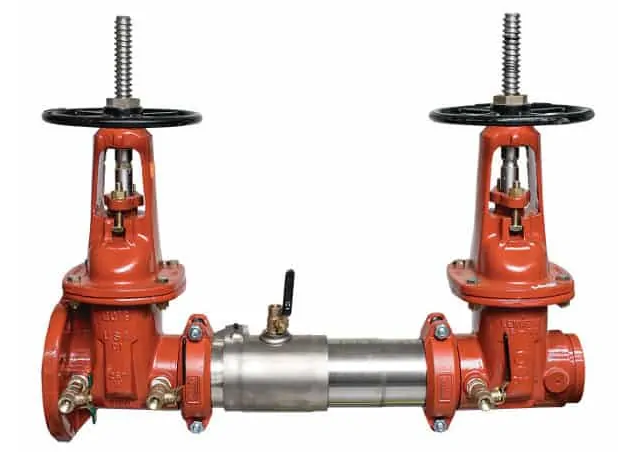
Reduced Pressure Zone Assembly (RPZ)
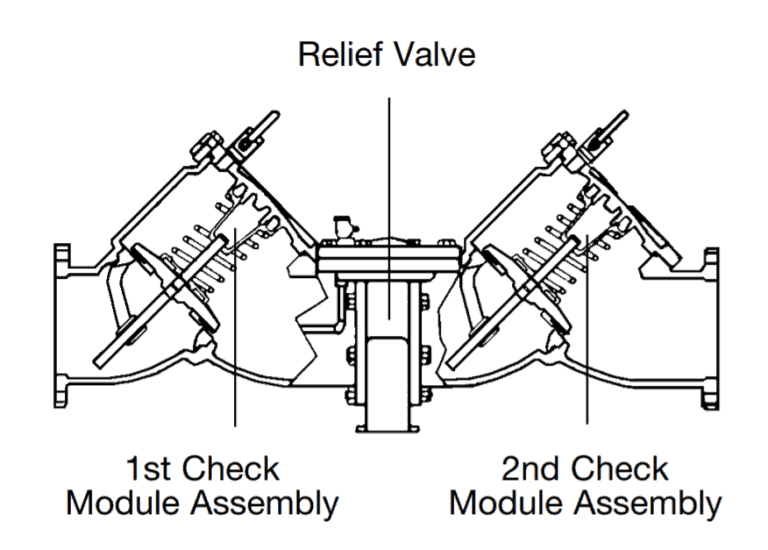
Reduced Pressure Zone Assemblies (RPZ) are the most widely utilized devices to protect and isolate the potable water service to a building from the building side pipe in high-hazard scenarios. A Reduced Pressure Zone Assembly (RPZ) features two independently operated check valves, just like a double check valve assembly, but it additionally has a hydraulically controlled differential relief valve situated below the first check valve. The theory behind RPZs is that they lower the water pressure across the device by around 8 psi.
To prevent backward flow, the valves on the supply side are kept closed by the higher pressure. The relief valve opens if one or both of the check valves fail, allowing water to flow out of the device and into a floor drain. This prevents contaminating the city supply water with whatever is in the building’s pipes.
A backflow preventer with a Reduced Pressure Zone (RPZ) improves the protection of redundant check valves even further. This device is virtually fail-safe thanks to the addition of a hydraulically actuated differential relief valve.
The pressure between the two check valves—known as the zone of reduced pressure—is maintained at a lower pressure than the supply pressure during the normal operation of an RPZ backflow preventer. The relief valve is designed to open and discharge water to the outside if either check valve leaks, ensuring that backflow is never an issue.
In high-hazard cross-connections, where hazardous compounds like antifreeze or corrosion inhibitors could endanger public health if introduced into a city’s water supply, plumbing standards often mandate RPZ backflow preventers. Some municipal water authorities, on the other hand, make them a requirement for all fire-fighting applications.
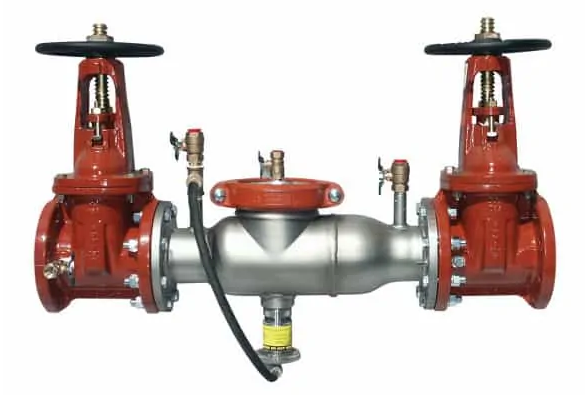
For instance, suppose residential potable water is connected to a mechanical system (either chilled water or boiler water) for makeup. Chemical treatment is usually applied to these HVAC pipes to protect and prevent corrosion. An RPZ backflow preventer is a fail-safe mechanism to ensure that the chemicals do not flow back into the drinking water supply of the building (or the city).
It is equally necessary for the building’s operator or engineer to keep up with regular maintenance and inspections to ensure continuous safety and compliance. Annual inspections of backflow devices are required by a qualified backflow testing and servicing business. They will need to be replaced or rebuilt every 5-8 years, even if they are tested and approved annually.
Check Valve vs Backflow Preventer: Greater Protection Is Needed for Potable Water Supplies
Backflow is prevented using check valves in a variety of applications, including HVAC systems, sump pumps, and fire sprinkler systems with elevation changes. Many water authorities and towns, however, want the more reliable protection of backflow preventers to keep drinking water safe when it comes to public health and safety.
Understanding the key differences between backflow preventers and check valves can help property owners and facility managers see why the additional cost and complexity are justified.
FAQs about Backflow Preventer Vs Check Valve
What is the difference between a check valve and a backwater valve?
For instance, a check valve is often employed to stop liquids from polluting a pure water source. Yet, a backwater valve is frequently created to safeguard your sewage line. Both types of valves have a similar appearance and operation.
Is backflow preventer and double check valve the same?
In that it is a mechanical backflow preventer made up of two independently operating, spring-loaded check valves, a dual check valve is comparable to a double check valve. Yet it typically lacks shutdown valves, might or might not have test cocks or ports, and is generally less dependable than a DC.
Where should a backflow preventer check valve be installed?
RPs have to be set up above ground. Backflow preventers placed indoors must be a minimum of twelve (12) inches above the floor and no more than four (4) feet above the floor, with appropriate clearance around the backflow preventer for testing and/or maintenance.
What is the failure rate of backflow preventer?
If your backflow preventer doesn’t pass the test, it needs to be cleaned, repaired, or, in certain situations, fully replaced before another successful test can be conducted. After a year, these backflow preventers malfunction at a rate of 10–15 percent.
Can I use a check valve instead of a backflow preventer?
We also dispel a myth that is frequently raised in online forums: while check valves have other valuable uses, they cannot be regarded as a secure alternative to backflow preventers when it comes to safeguarding the purity of drinking water.
Summary
Check valves and backflow preventers are extremely important components of a facility’s plumbing system, and the necessity of selecting or specifying the correct equipment should not be underestimated. Furthermore, regular inspection and repair of your gadgets will ensure you.
Download Backflow Preventer Vs Check Valve PDF
You can download this article as a PDF so that you can access it whenever you like.
linquip.com-Backflow Preventer vs Check Valve Whats the Difference
Watch Videos about Backflow Preventer Vs Check Valve
For more information about Backflow Preventer vs Check Valve, watch this video about Backflow Preventer vs Check Valve.
Buy Equipment or Ask for a Service
By using Linquip RFQ Service, you can expect to receive quotations from various suppliers across multiple industries and regions.
Click Here to Request a Quotation From Suppliers and Service Providers
Read More on Linquip
- Parts of Check Valve
- Everything You Need To Know About Check Valve Function
- Lift Check Valve: learn the basics, get the most out of it!
- Check Valve Manufacturers
- Control Valve Manufacturers
- Solenoid Valve Manufacturers
- Angle Valve Manufacturers
- Valve Manufacturers
- How to Prevent Sewer Backflow Valve Problems?

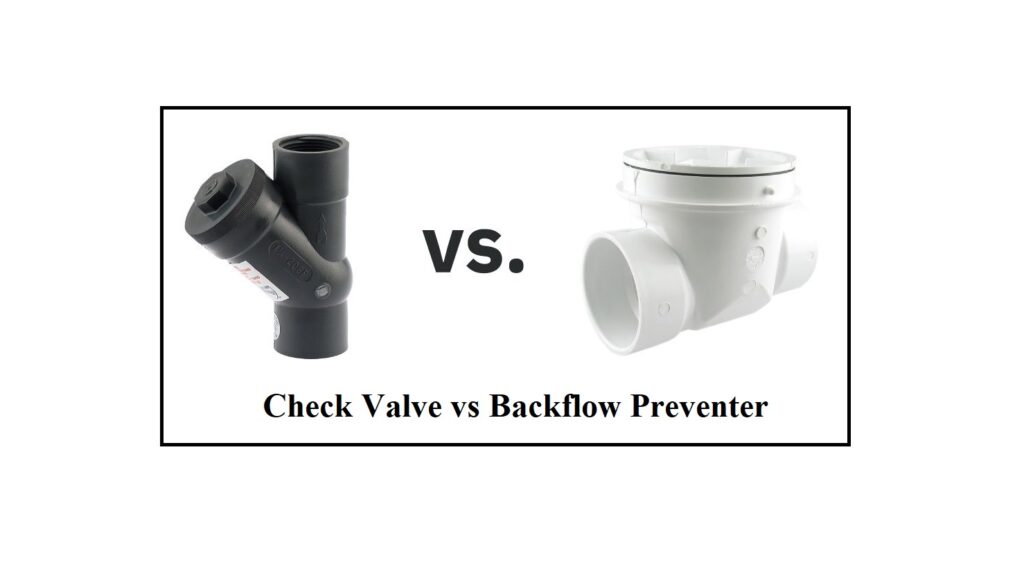


Thank you for explaining that a backflow preventer, like a check valve, guarantees that water only flows in one direction and its purpose is to keep water flowing from the water main to the pipes of a structure. My husband has been telling me to install a backflow preventer on our system. Knowing what it can do, I should tell him to go for it and hire a plumber near my place to do the backflow preventer installation.
Thank you for your comment Victoria. We hope that you visit our other posts on Linquip.